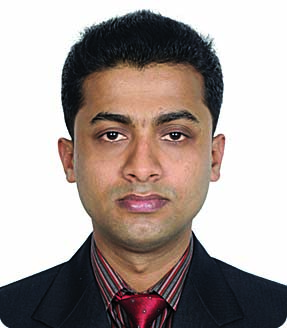People with disabilities face greater SRHR challenges

It’s not easy to talk about sexual and reproductive health and rights (SRHR) in the countries of Asia and the Pacific. But it becomes even more challenging for a person with a disability.
“Most countries in the Asia Pacific region have focused on improving people with disabilities’ access to employment and education. However, limited attention is given to their SRHR. Several research findings suggest that PWDs have high unmet SRH needs,” Phyu Nwe Win, who works in Myanmar on the issue, said.
“This is mainly due to false social perceptions that people with disabilities, especially young women and girls, lack sexual desire and therefore are unlikely to have SRH needs,” she said at the 11th session of the 10th Asia Pacific Conference on Reproductive and Sexual Health and Rights (APCRSHR10) held virtually.
The APCRSHR10, and Reproductive Health Association of Cambodia (RHAC) and CNS are co-hosting the six-month long conference which is being held in 14 different sessions, each two weeks apart.
There are 690 million people with disabilities in the Asia Pacific. Estimated 16 million people live with disabilities in Bangladesh, which is about 10 percent of the country's population, according to the latest statistics.
What needs to be done?
SRHR include issues like abortion, HIV and other STIs, maternal health and rights, contraceptive access, gender-based violence, discrimination and stigma, and more.
Phyu Nwe Win said communities should become more open to sexuality and disability and support their peers to achieve their SRH needs by integrating them in community programmes. “NGOs need to develop a disability lens within their SRH programmes by forging links between organizations currently working on SRH and those working with PWDs,” she said.
“NGOs should work with women with disabilities from a young age to empower them to be able to challenge stigmas and demand their rights. They should also educate families, communities and healthcare providers on disability issues to break down barriers that produce oppressive environments,” she said.
“The voices and opinions of people with disabilities should be prioritised and taken into account in the planning and implementation of policies, programmes and activities.”
Tanzila Khan, Founder, Girly things, Creative Alley, Pakistan, said: “Persons with disability struggle a lot with their identity. We don’t find ourselves fit in society. All the buildings are made accessible only to the able-bodied. The same applies to policies and legislatures and structures. So we are always isolated. More than the disability itself, its psychological effects take a bigger toll on the person.”
“To talk about SRHR is a challenge even for a normal person and it becomes even more challenging for a person with a disability. But nothing is a challenge if you use the right language,” she said.
“I realized that despite coming from an orthodox society (which is not supportive towards women) my power was my public speaking. I could always apply my advocacy skills and now my entire family is on board. So my first leadership project was my own family and my society around me,” she said while describing her works in a challenging environment in Pakistan.
“Advocating for SRHR is a challenge for any organization working in Pakistan. To highlight these issues for persons with disability at government and policy level I had to think of innovative ways.
“So, my team came up with two particular ideas and so far that has worked. Firstly we realized that we need to be more creative to generate focus on a taboo subject in the community.
“Disability in itself is a taboo subject and if combined with SRHR, it becomes like a double scoop ice cream that becomes difficult to digest for many people, including policy makers and leaders, who are already intolerant.
“So we camouflaged the entire concept through creativity and we used the medium of video and theatre. Our theatre technique was not just a play that one was watching but about being a part of the play where we would make the audience become the actors,” she said.
“We would let them address their own biases and this proved to be an enjoyable technique. As a person with a disability I am confined to the wheelchair, but through theatre I could be anybody- I could be a victim or I could be a saviour.
“Our projects under Creative Alley, that include the theatre of taboo and workshops with women with disabilities, have given us more insight into what goes beyond SRHR and where the gap lies.
“When we do not provide services and products to people with disabilities, we actually miss out on a huge market, and eventually the project becomes unsustainable. We try to bring all communities together. We do not work only for people with disabilities, as this is likely to alienate them.
“They are a part of the society and they require inclusion. Only then can they feel that they are part of the solution and not just part of the problem.
“We invite people from all walks of life, give them different tasks, and make them question their own values, put them together and give them a direction on what they will do when next time they come across the situation.
“Whether they are doctors, lawyers, media personalities and bloggers or anybody else, the idea is to make sure that they are sensitized enough about people with disabilities and their SRHR. That is a toolkit that we give to them for their leadership.
“Once they go back to making their own projects they should understand that there is a community (of PWDs) that does not need their help but provides them a market. It has to be respected and treated as a market and products and services should specifically be designed for them,” she said.





